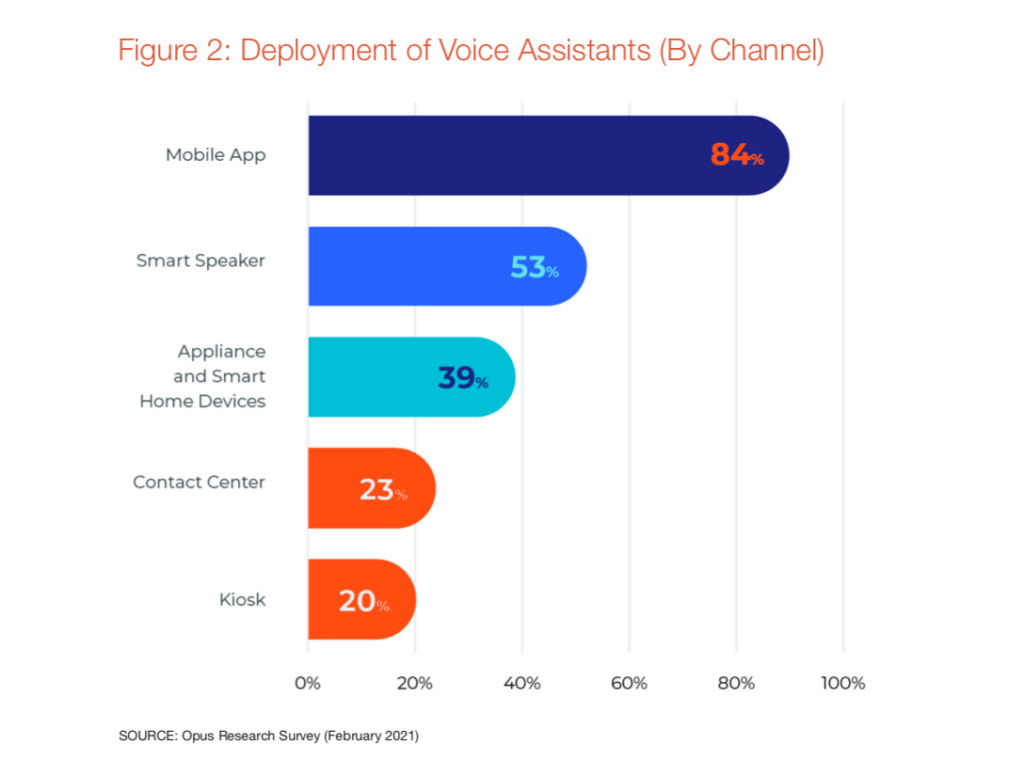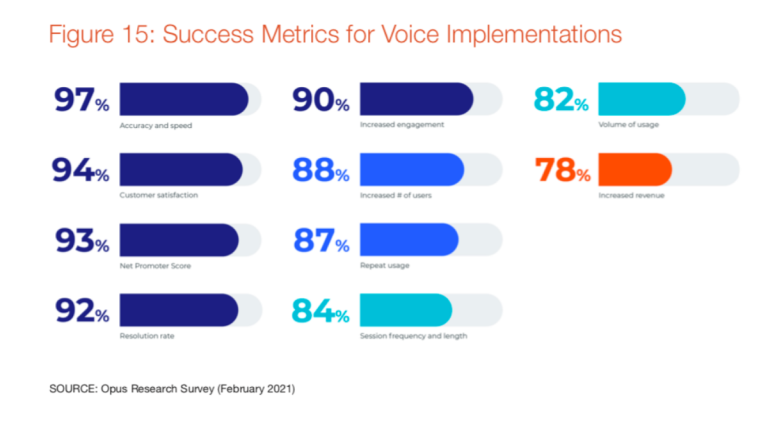Measure voice assistant success
How will you measure voice assistant success? What challenges are you solving by voice-enabling a mobile app, hardware device, or customer contact center? What outcomes do you expect at the corporate and departmental level?
Deciding on the Voice Performance Indexes (VPIs) for your voice assistant is a critical step in determining the roadmap. Identifying which challenges are greatest for your company as a whole—and at the departmental level—will help you decide where to deploy a voice assistant first. For example, if your customers are consistently unhappy with your customer service center wait times or outcomes, you may want to voice-enable that first.
If you’re like 43% of those surveyed by Opus Research, a “quick start and rapid deployment” may be your greatest challenge. In that case, you may want to choose the low-hanging fruit of a voice-enabled mobile app.
Likely, you’ll find that individual departments have different challenges from those identified at the corporate level. In that case, it’s essential that voice teams get cross-departmental buy-in to goals that align individual challenges to the overall corporate goals. Both types of goals should be included in the voice AI roadmap and individual stakeholders should understand and agree from the beginning where their needs are ranked and how they’ll be addressed.
Once you know what you want to measure, you’ll need a unit of measurement. A majority of the survey respondents named greater customer satisfaction and convenience as drivers for business value. To measure the voice assistant against these goals, business leaders looked to voice assistant performance, customer satisfaction (CSAT), and Net Promoter Scores (NPS) to measure progress and outcomes.
While you may experience an immediate uptick in positive customer reviews, the voice assistant should be given a reasonable amount of time to show results and ROI. If you’re looking for an immediate impact on the bottom line, discuss monetization opportunities with your voice AI provider.
Find the right voice AI technology partner
Once you’ve set your internal goals and have consensus for the voice assistant roadmap up and down the organizational chart, find a voice AI technology provider that will help you achieve those goals and then make them part of your team.
Include the engineers and account representatives in internal conversations and inform them of decisions. After a decade of experience, providers of voice AI technology can provide expert advice and help you avoid common pitfalls, if you let them.
As with any other partnership, the outcomes of the collaboration between you and your voice AI platform provider will only be as good as the communication between you. Build in regular check-ins at every level of your organization and with the voice AI company.
Nearly half (46%) of survey respondents are looking for a full-service solution that includes guidance on developing a voice strategy, creating a customized voice assistant designed with their unique customers in mind, and the ability to easily make changes and receive ongoing support. If you’re part of that cohort, you’ll want to ensure that our partner is as invested in your outcomes as you. Find out how the organization handles changes. You’ll want a partner that can quickly pivot to provide changes when necessary without creating unnecessary paperwork and delays.











